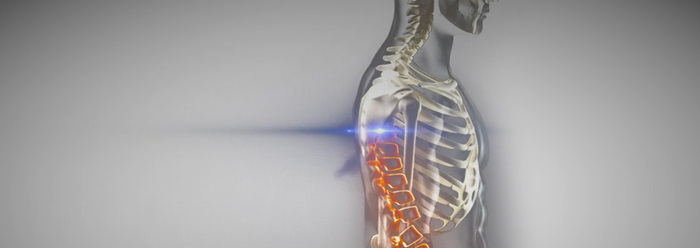Four-legged animals have at least as many back problems as humans. Think of the race horse with back-related lameness, or the Dachshund with a slipped disk. Any veterinarian will tell of the multitude of pets and livestock who had to be "put down" because of back problems. In the wild, animals fare no better.
The thought of humans reverting to all fours is laughable. It wouldn't last more than a few hours. Even those few unfortunate babies reportedly raised by animals adopted erect posture without any human models. This is the way God designed us and the way we function best.
Furthermore, there are significant structural differences between the two back styles. The "s" curve in our back is essential for erect posture, it holds our head upright, and transfers the body's weight to the lower back and hip, which is much more robust to accommodate the load. The connecting shoulder and pelvic girdles are likewise well designed, as are the muscles which facilitate lifting heavy weights or threading small needles.
No, our back problems are not due to evolution, they are due to the curse. While the "very good" design of creation can be abused and has deteriorated over time, its present remnant still serves us quite well. No hopeless story of animal ancestry will change that "Back to Genesis" truth. As has been well pointed out in articles in Acts & Facts, virtually no evidence for true evolution exists. Most "examples" of evolution are nothing more than adaptation. Evolution advocates are reduced to the repeating of "just so stories" in a desperate attempt to make evolution sound like it really happened. On the surface, these sound convincing, but upon reflection, they evaporate.
The thought for this article came from the airline magazine furnished on a recent flight. While an article regarding back pain explained that improper diet and wrong habits are the real culprits, it attributed the ultimate cause of back pain to evolution. Our forefathers walked on all fours, and our spinal column is not designed for upright posture. When I first heard that claim in high school, it seemed convincing, but even then it was a reach.
When confronted with such a spurious claim, we should ask probing questions, such as, do you mean that the human back, if treated properly, is not equipped for the range of life-styles that humans down through history needed to endure? Do you mean that animals on all fours have no back trouble? Would the human backbone function well on all fours? Even asking the questions reveals the emptiness of the claim. The answers show its absurdity.
The human back has well served a vast number of uses over the millennia, from hunter-gatherer to farmer to steel worker to stenographer. And the range of environments from arctic to maritime to desert to jungle demands adaptability, especially over the longer human lifespan. No other design would be so versatile.
*Dr. John Morris is President of ICR.




